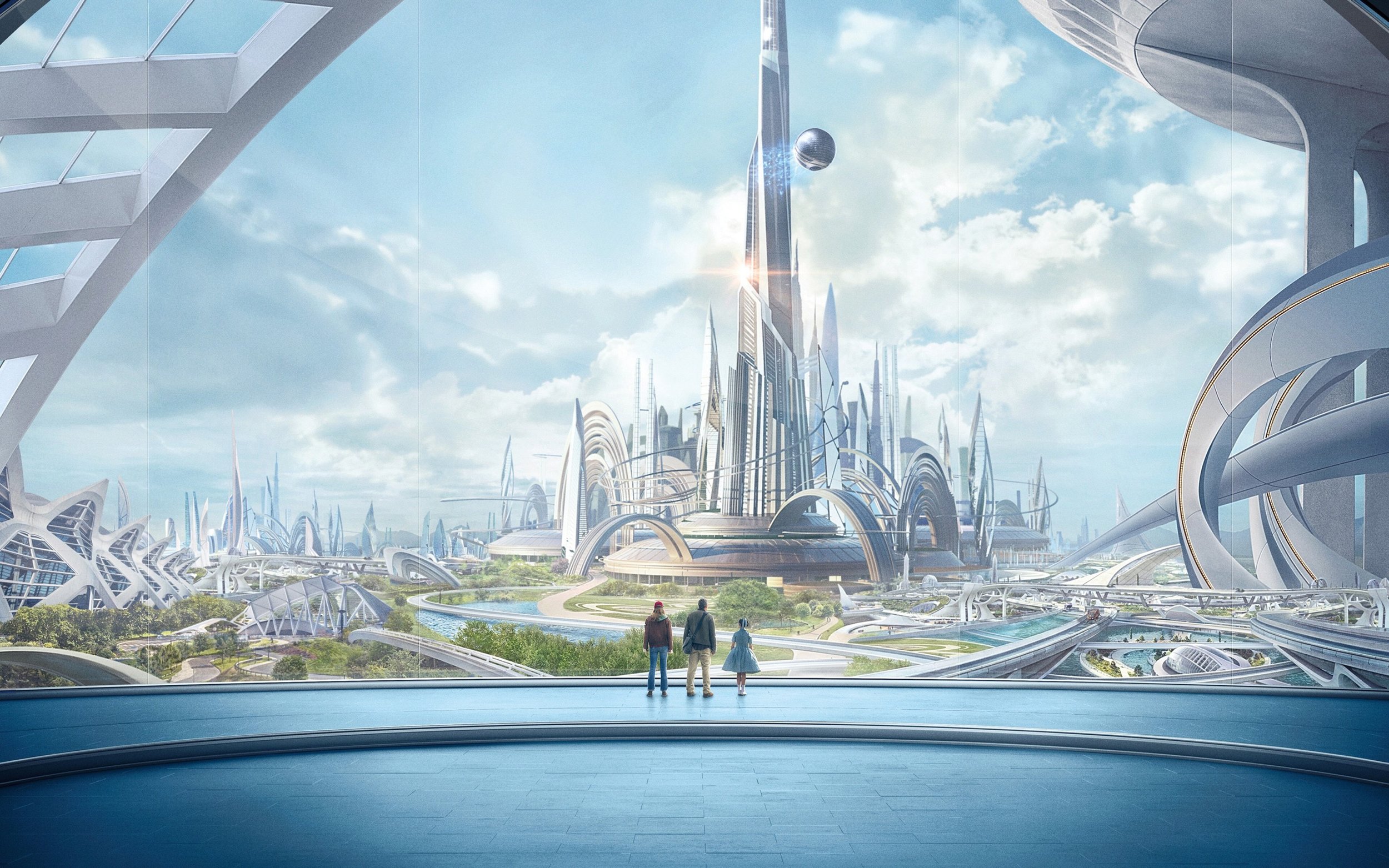beyond the shiny - what makes this film solarpunk goes much deeper
Looking to the future or the past? [IMAGE: Disney]
“A solarpunk film? Really?” Was my reaction when a friend said Tomorrowland might be an example of the genre.
My scepticism came because of what I’d seen in the trailer and clips. Images of a fantastical future city filled with skyscrapers, rocket ships and flying cars. To me this looked like 20th century modernist visions of utopia rather than the more down to earth rooted shade of solarpunk I favour.
For our Solarpunk on Screen series I reluctantly came to watch it. I discovered not only is Tomorrowland solarpunk, it’s probably the most solarpunk fiction film I’ve seen in one very important way.
To explain why the rest of this piece includes spoilers. You may want to pause reading this and go watch Tomorrowland before carrying on. OK, now that’s out of the way, let’s get into why this is a solarpunk movie.
The setup of Tomorrowland has our teenage heroine Casey Newton, played by Britt Robertson, feeling like she’s the only person who still believes better futures can happen. Her classmates, teacher and even her father all seem addicted to believing things will only get worse.
Reach for the sky [IMAGE: Disney]
Then she discovers a badge which transports her to a vision of a bright future metropolis, Tomorrowland. It’s full of diverse happy people doing things like jetpack races, riding zero gravity monorails and flying frequent space missions to other worlds. She is overwhelmed with a desire to go there.
Shadowy forces want the badge for themselves and try to kill Casey for it. She goes on the run finding Frank Walker, played by George Clooney, who takes her to the alternate dimension where Tomorrowland exists. Though she discovers the reality does not quite match the vision she has seen.
Dynamic duo [IMAGE: Disney]
In essence this is a PG 13 adventure story with enjoyable action, acting and great SFX. Where it gets solarpunk is less the depictions of the glitzy Metropolis Solar future it depicts and more the message of the film.
In the third act of the film, we find out Tomorrowland sent visions of itself to special people on Earth to encourage them to inspire humanity to make a better world. However, the man who runs Tomorrowland, David Nix, played by Hugh Laurie, felt he needed to warn the people of our dimension about the threats facing us.
Do I look evil in this outfit? [IMAGE: Disney]
He used a tower called The Monitor to transmit images to all of us about the massive potential dangers facing humanity, including climate breakdown. His aim was “to scare them straight” so people would then take action to avoid the end of civilised life. Instead, he saw the majority of Earth ignore these warnings and came to feel it was hopeless. He says,
“In every moment there is the possibility of a better future but you people won't believe it and because you won't believe it you won't do what is necessary to make it a reality. So, you dwell on this terrible future and resign yourselves to it, for one reason. Because that future doesn't ask anything of you today.”
The Monitor [IMAGE: Disney]
After a final battle, involving kick-arse robots of different shapes and sizes, our heroes defeat Nix’s forces and manage to destroy The Monitor. They take control of Tomorrowland and decide to start sending messengers back to our world to recruit people to make a better one possible. Frank says to them,
"It isn't hard to knock down a big evil building that's telling everybody the world's going to end. What is hard is figuring out what to build in its place. If we're going to do that, we're going to need all of you"
The film ends showing how the ‘dreamers’ of our world these messengers approach come from a very wide variety of backgrounds. They are musicians, engineers, community gardeners, school teachers, street artists and conservationists to name a few.
A rainbow of dreamers [IMAGE: Disney]
For me this gets to the heart of why solarpunk is important. As we write about in the first part of our manifesto ‘Imagine Desire’, the evidence shows selling climate hell for the past 40 years has encouraged more passivity and denial rather than the collective action to change things.
What we need is more visions of deliciously sustainable futures to motivate us to make them so. The greater the diversity of the community of people who take part in this the better.
This film promotes this message with the budget and storytelling skill of a Disney movie. It has communicated why we need solarpunk to a large audience, something I think we need a lot more of.
So even though shiny skyscrapers and rocket packs are not my favourite shade of our genre, if I were now asked, “Is Tomorrowland a solarpunk film?”, I would say, “Yes, it really is.”







